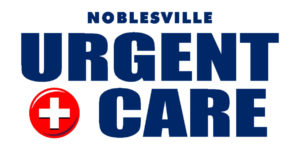
What should you do if you take the free COVID test at home, and it says you are negative for COVID, but you have ongoing and classic symptoms?
There are two types of COVID-19 tests. Your provider can advise you on which type of test is right for you.
- Rapid antigen tests (like the at home COVID 19 tests) are searching for a viral toxin that is released during active viral replication during the acute infectious stage of illness. Most frequently these viral toxins are what the immune system is reacting to and are the cause of symptoms. For that reason, if a person is asymptomatic these tests can frequently produce a false negative result. They can also be falsely negative if the viral load is not high enough in the mucus secretions to be detected by the threshold of the rapid test. Testing too early can cause results to be inaccurate as well as testing too late….
- PCR tests search for viral DNA and are the gold standard for detecting COVID 19. They take the viral DNA and make it into millions of pieces for ease of detection of even very small amounts of the virus in the body. However, PCR tests can still be positive many weeks after active infection, and for that reason can cause issues with returning to work or school. They can be positive when a person no longer is infectious, but their body is still working to clean up the remaining viral particles and remnants after an acute infection.
What if a person is wondering if they have the flu? If a person is concerned for the flu they can come in to be tested for the flu. Flu symptoms vary from year to year but most often involve body aches, fevers, malaise, and sometimes URI symptoms such as runny nose, headache, or cough.
Wearing a basic droplet mask will help prevent family members from contracting the illness as the influenza virus is spread through respiratory droplets similarly to COVID 19.
What are the symptoms of the COVID Omicron variant? The current most common symptoms of the omicron variant tend to be isolated to the upper respiratory tract; sinuses, ears, nose, and throat. We have been seeing an patients presenting with what they think is just a sinus infection and it turns out to be COVID-19.
Sinus congestion, runny nose, headaches, and sore throats are the most common symptoms. Patients are frequently feeling better by the time they are able to get a COVID test and many are feeling improvement after 3-4 days of illness compared to previous variants that left people feeling ill for 1-2 weeks or longer.
A word of caution: sinus infections do not always require antibiotics for treatment. Most (85-90%) are caused by viruses. So if patients have only been symptomatic for 1-3 days it is not best to prescribe an antibiotic for their illness. The guidelines are very clear that unless the duration of the illness has surpassed 7-10 days, an antibiotic is not indicated. There are many other options for treating these symptoms. We know patients need help navigating the overwhelming options available to them over the counter. We believe that educating you on what to choose to treat the symptoms you are having will give you a part in getting better, more so than just taking a “pill”.
So, our advice is for you to come in, see one of our providers, and help you get the right treatment, just in time!

